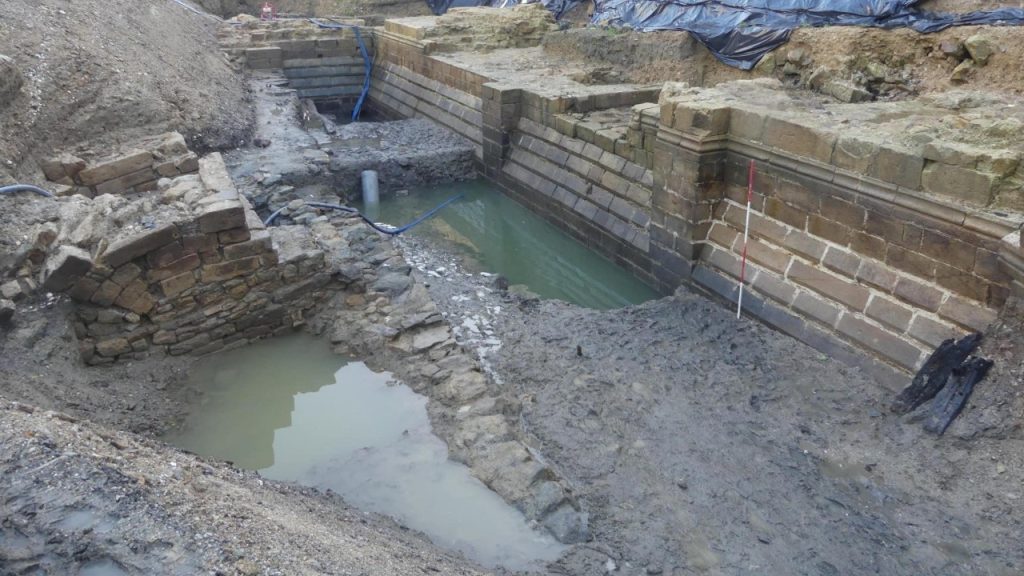Archaeologists recently made an exciting discovery in Vannes, France – a 14th-century castle called the Château de l’Hermine, built by John IV the Conqueror in the 1380s. The castle was found under the courtyard of Hotel Lagorce during excavations conducted by the National Institute for Preventive Archaeological Research (INRAP) between the spring and autumn of 2023. The remains of the castle were surprisingly complete and well-preserved, revealing a ducal house with thick walls, a moat, a square tower, and several staircases. Excavators also uncovered a variety of objects related to daily life in the castle, including coins, cooking dishes, jewelry, and remarkably preserved wooden items such as barrels.
Further exploration of the site in Vannes revealed even more interesting artifacts, including tiles covered with graffiti, padlocks for furniture, and pieces of clothing. INRAP noted that the site was incredibly well-managed, with a high level of standardization and mastery of the construction process. The construction of the castle, which occurred in a single phase, indicated the significant financial and human resources that were dedicated to its creation. John IV’s involvement in the selection of skilled engineers and craftsmen of his time became evident through these findings, showcasing his ability to oversee a project of such magnitude with expertise and precision.
The detailed excavation of the castle site shed light on the historical significance of the Château de l’Hermine, highlighting the architectural grandeur and technological advancements of the 14th century. The presence of a moat, well-preserved staircases, and various artifacts related to daily life in the castle provided valuable insights into medieval living conditions and societal structures. The discovery of wooden items, ceramic objects, and personal belongings showcased the daily activities and material culture of the occupants of the castle. These findings contribute to a better understanding of the cultural practices and technologies of the period, enriching the historical narrative of Vannes and its inhabitants during the 14th century.
The meticulous excavation process also unveiled the strategic planning and construction techniques employed in building the Château de l’Hermine, emphasizing the importance of skilled labor and architectural expertise during the medieval period. The standardized modules and homogeneity of materials used in the construction highlighted the meticulous attention to detail and quality control implemented by John IV and his team of craftsmen. The management of the site throughout the construction phase demonstrated a high level of organization and coordination, reflecting the ruler’s ability to oversee complex projects with precision and efficiency. The findings at the site underscore the ingenuity and craftsmanship of the medieval builders, as well as the elaborate planning and engineering skills required to create such a monumental structure.
Overall, the discovery of the Château de l’Hermine under the Hotel Lagorce in Vannes, France, represents a significant archaeological find that offers valuable insights into medieval architecture, technology, and society. The well-preserved remains of the castle, along with the artifacts unearthed during the excavation, provide a rare glimpse into the daily life and material culture of the inhabitants of the 14th century. The meticulous excavation and analysis of the site by archaeologists have enriched our understanding of the historical context surrounding the construction and occupation of the castle, highlighting the innovative construction techniques and skilled craftsmanship that defined the era. The discovery serves as a testament to the enduring legacy of John IV the Conqueror and his visionary approach to architectural design and construction.


